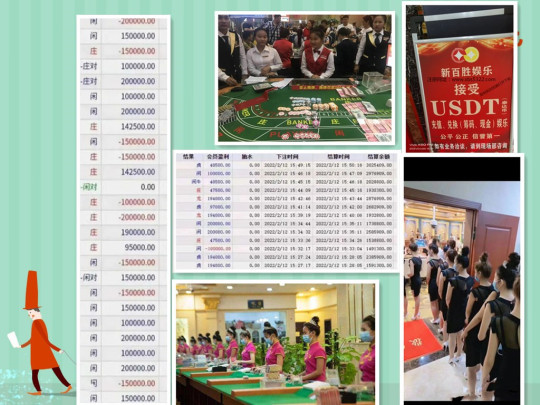#官话
Text
Writing “Chinese” in Chinese
Here is a little bit of information that I thought would be great to share!
So whenever I’m writing my tags or trying to introduce myself, I think about how I would actually write the name of my target language. So for example, to say “I am learning Spanish” I would write “ Estoy aprendiendo español”. The translation is simple. But for Chinese, that’s not the case.
There are differences in Chinese as it’s written versus when it’s spoken. There’s also differences between Mandarin Chinese and Cantonese Chinese. It was interesting trying to make sense of which ones to use and when, so I looked it up! I used several resources, which will be linked at the end.
Below, I have the noted words, with both Mandarin and Cantonese pinyin and jyutping to showcase how it’s pronounced. There are also detailed explanations as well. Anyway, here it goes!
Chinese (person): 中国人。 Zhōng guó rén / zung1 gwok3 jan4
The main reason why I placed this here is due to how English as a language works. When you look up how to say Chinese in Chinese, this will pop up. It’s only due to the fact that English uses words such Chinese, Spanish, etc to describe the language, people, and objects pertaining to that country. So we use “Chinese” for both “I am Chinese” and “I speak Chinese”. This not the case for other languages though. They have separate words for the language and the people. So in Chinese, to that say a Chinese person you use “中国人”.
This breaks down in multiple ways. 中 means middle and it’s commonly used to as an indication for China. 国 means country so when used with 中, it means middle country, or China. When having 人 , which means person, it becomes the meaning given above. All of this is important to know as 中 and the other characters will be used with this context in mind.
Chinese (written): 中文 zhōng wén / zung1 man4
This is mainly for Chinese as the written language. It can apply to all the languages under it (so mandarin, cantonese, etc). It can also be used for the spoken Chinese as well. This would be the simplest form to use when wanting to say “I’m learning Chinese.” This would not help with specifics though.
This is written like this due to 文 meaning writing, character, script, and language. With 中 meaning China, the two form together to create the meaning of “the written language of China”, “the Chinese written language,” or even a simple “Chinese writing”. It also can be seen as “Chinese Language” as well. This is why even though you can use this as a simple “Chinese”, it carries the idea of writing in Chinese.
In general, if you don’t mind the vagueness of 中文, then you can use it. But if you want to be specific in whether your learning Mandarin, Cantonese, etc, then use the ones below.
Mandarin Chinese (Han People): 汉语 hàn yǔ / hon3 jyu5
This is used to say the language of the Han people, which make up most of the Chinese population. This is understood to mean Mandarin and is commonly used for it. It is also used by teachers as well so while 中文 is used by everyday people to say Chinese, 汉语 might be used in schools to specify Mandarin.
This is broken down by 汉 meaning the Han people, an ethnic group that makes up most of the population in China, and 语 meaning language, tongue, or expression. This means that with the two combined, it brings the idea of “Han language” or “language of the Han people”. It is used more often to refer to the spoken language of Chinese, such as Mandarin.
Small note: I went back through to double check this post and it seems that for some speakers, this actually does refer to other dialects/languages. Some have noted that people can use this to also mean Cantonese as well, although several articles go against this.
Mandarin Chinese (Common Language): 普通话 pútōng huà / pou2 tung1 waa2
This is used to also say Mandarin Chinese, but through the idea of a “common language” or “common dialect”. It’s from the idea of speaking in the common dialect, which in China and learning settings, would be Mandarin. This is how the Chinese government puts their official language.
This can be broken down by 普 meaning universal, general, widespread, 通 meaning pass through, common, communicate, and 话 meaning speak, talk, communicate, dialect. This all comes together to form the idea of a common dialect.
I am curious if this meaning for Mandarin Chinese changes depending on environment. If one is in an environment where most speakers speak Cantonese, would 普通话 mean Cantonese instead? Would love to know!
Mandarin Chinese (Taiwan): 国语 guóyǔ / gwok3 jyu5
This version is used primarily in Taiwan. It means “language of the country” or “country language”. This doesn’t explain much about the exact language is it, but since Mandarin is spoken in Taiwan, using this word to describe Mandarin makes sense. It’s the idea of speaking the country or national language, aka Mandarin.
This word can be broken down by 国 and 语。Both of which have been explained above.
Mandarin Chinese (Overseas): 华语 huáyǔ / waa4 jyu5
Now in in the articles I looked at, they note that even in overseas communities there are different words for Mandarin. This version is used mainly in South East Asian countries, such as Singapore and Malaysia. This time though, the ideas behind the characters are a bit more complex in nature.
The characters can be broken down by 华 and 语. While 语 has been explained before, 华 carries a much more complicated history. Just as 中 can mean “Middle” while also being used to mean China, 华 does the same. 华 means splendid, magnificent, and flowery, but it’s not this meaning that 华语 is using. That is due to 华 being used in the word 华夏, which is a concept of the Chinese civilization and nation. It’s an awareness of the Han people and their ancestors.
夏 is the name of the very fist Chinese Dynasty, the one that formed the country. Having 华夏 together brings this idea of a great dynasty and the importance it holds for Chinese communities and their shared history. So for Chinese people in places such as Singapore and Malaysia, it’s way for them to connect to their ancestry. They can also connect with their language through this, hence 华语。
This all comes together to bring the idea of Chinese people in Singapore speaking the language of their people or ancestors, which in most cases is understood to be Mandarin. The language of their Han ancestors, 华语,is Mandarin.
Mandarin (Officialese): 官话 guān huà / gun1 waa2
This one is very straight forward, but is also used in many different contexts. 官 means official, bureaucratic, or government. When this is combined with 话, it takes on the meaning of official language, which in China is Mandarin. This isn’t it’s only meaning though. It can also be used to say bureaucratic language or even used to mock or joke about “official language” or “officialese”. So be mindful that this isn’t used to only mean Mandarin.
Mandarin (Northern Dialect): 北方方言 běi fāng fāng yán / baak1 fong1 fong1 jin4
This one is actually quite simple! The first part of this is 北方, which means north or northern. The second part, 方言, means topolect, which is sorta like a dialect. This very easily translates into northern topolect/dialect. This encompasses all the dialects of northern, north eastern, and south westward China into one thing of “Mandarin”. This is only really used in linguistic circles. It wasn’t in the main articles and only brought up in terms of linguistics so using this is not very important. It’s only for technicalities.
So far this is all that I have found for Mandarin but, there are also several ways to say Cantonese as well.
Cantonese (Hong Kong): 粤语 yuèyǔ / jyut6 jyu5
This word is mainly used in Hong Kong. This variation is also complex in it’s meaning as it brings older ideas of the southern provinces in China. 语 has already been explained previously but 粤 carries much more history. When looking up 粤, it doesn’t show much detail other than just “Cantonese” or “Guangdong or Gaungxi province”. But if you look at the radical used in the character, this brings more information.
In the character 粤, there is the radical 米. This radical has the meaning of husked rice or grains of rice. This brings about the ideas of 粤 relating to rice, and in turn the language of things associated with rice. This is amazing because rice was traditionally cultivated in southern china. Rice was made in the south due to the warm and wet climate. Now, the south is associated with Rice. There is even an on going stereotype that southern Chinese people love rice and rice related things.
So Cantonese, which tends to be spoken in southern China, is referred to as 粤语, a word that is related to rice. It all comes together in this cool way that otherwise would not have been known without going into the radical.
Cantonese (Mainland China): 广东话 guǎngdōnghuà / jim2 dung1 waa2 or 6
This version is used by those in mainland china. The word gains its meaning from the region of 广东, which is a province in southern China where most of the population speaks Cantonese. (Where my Chinese ancestors are from :D ) Because of this, Cantonese is referred to as 广东话, or “Guangdong Language” or “Guangdong Dialect”.
This is very simple to break down as 话 was explained previously. 广东 is simply the name of the region in southern China. The character 广 means wide, extensive, and broad. The character 东 means east, host, or owner. I’m not sure on the history of why the southern provinces are named this way, but it is interesting to know. I will probably make a post explaining this history when or if I find I out.
Cantonese 白话 báihuà / baak6 waa2
This version of saying “Cantonese” is very very informal. It’s a term that’s very colloquial. It’s reportedly not used in Hong Kong, but can still be used in Mainland China. It’s a term that has many other uses and meanings so it’s not wise to use it only to say “Cantonese”. It can mean gossip, chit-chat, or even baseless claims. This is all derived from it’s characters.
白 means white, but just like many other languages, white isn’t only to say the color. 白 is also used to mean blank, clear, or plain. With this, when combined with 话, it gives off the idea of speaking very plainly and/or having nothing of value to your talk in either gossip or no evidence to back up claims.
It’s versatile in it’s use due to this, but those who use it to mean Cantonese are probably using it to make Cantonese seem like the “common” or “plain” language used. It’s the same idea of 普通话, where it’s the common tongue or dialect. Or at least that’s how I’m interpreting it.
This is all I have in terms of how to say “Chinese” in Chinese. I realize only after making this post that I did not use traditional characters at all. This would only change the appearance of the characters, not the pronunciation or use of the characters. Anyway, besides this I hope this post proved to be helpful and allowed many of you to learn something new! My sources are now listed below!
Sources:
https://goeastmandarin.com/how-say-chinese-language-mandarin-chinese/
https://www.duchinese.net/blog/91-how-to-say-chinese-in-chinese/
https://www.tutormandarin.net/en/5-ways-how-to-say-chinese-in-chinese/
https://www.quora.com/How-do-you-write-Cantonese-in-Cantonese
https://www.quora.com/What-is-the-Mandarin-word-for-Mandarin
https://www.mdbg.net/chinese/dictionary
https://www.pleco.com/
#langblr#language leanring#peachycanton#chinese#chinese langblr#mandarin chinese#cantonese chinese#cantonese#Mandarin Vocabulary#Cantonese vocab#中文#汉语#普通话#国语#华语#官话#北方方言#粤语#广东话#白话#long post#cantonese vocabulary#mandarin vocab#mandarin langblr#chinese vocab#Chinese Vocabulary#so many tags omg#this took me days and i'm so tired#i just kept finding more things to add to my notes#please correct me if i'm wrong about anything
41 notes
·
View notes
Text
乡音难改说新加坡华语
林恩和(怡和世纪副主编) 2024-3-8
怡和世纪 第51期…

View On WordPress
0 notes
Text
Non-English Songs Celebrates Christmas #25 | Tsai Chin - 平安夜 (Mandarin)
#silent night#merry christmas!#thank you for putting up with me if you don't celebrate (& even if you do)#tsai chin#平安夜#mandarin#官話#官话#cmn#chinese#zho#中文#sinotibetan#asia#taiwan#2003#2000s#traditional christmas#christmas#Spotify
1 note
·
View note
Text


游戏网址 www.hn5596.com】【注册官网www.cl5965.com【备用网址 cL5579.com 】浏览器打开网址纸飞机:@ok271314 微信:ok092314 【QQ1577653887】
缅甸果敢老街华纳娱乐开户注册流程:非常的方便,可以自已在官网上注册开户,也可以联系接待专员手动开户:游戏多样,玩法齐全有 百家乐、龙虎、牛牛,缅甸政府批准合法注册公司本公司有现场同步视频直播的网络投注,手机电脑都可以投注,资金安全,对比电子平台更安全更可靠。
#新锦江娱乐网上官网下载#新锦江娱乐网上官网招聘#新锦江娱乐官网在线#新锦江娱乐手机下载#新锦江娱乐客服电话#新锦江娱乐是正规平台吗#新锦江娱乐平台#新锦江娱乐下载官网#新锦江娱乐唯一网址#新锦江百家娱乐官网
3 notes
·
View notes
Text
奥亚国际娱乐公司会员APP链接网址:11hn.cc 游戏APP网址:www.hn6879.com
缅甸大型赌场华纳国际现场同步正规实体网投平台最新推出线上博彩欢迎您,公司百家乐娱乐注册网址:www.hn6879.com APP链接网址:11hn.cc
公司秉承公平,公正,公开为宗旨保障资金安全,大额无忧,信誉老品牌,手机板需要打开浏览器输入点击二维码下载APP,
登录口输入账号即可只需要登录官网注册游戏账号,在登录口输入账号密码就可以进入公司实体现场厅景!24小时在线。
支付各种货币上分下分。USDT 泰达币 ,缅币KBZ 等等各种货币上下分 ,客服东明的电话号码:09686619127 /09881177306/09651235736
#云南边进果敢老街华纳国际娱乐网上真人视频,正规实体娱乐大型赌场公司注册官网:www.hn6879.com 网址:11hn.cc#想玩的话可以在手机自带浏览器复制,搜索注册#或者 谷歌 百度 也行打开然后就复制APP网址:www.hn6879.com 网址:11hn.cc 搜索注册进去
2 notes
·
View notes
Text
澳门赌场投注站3月收缴16.3亿美元投注额


澳门3月份的博彩结果出来了,博彩委员会(NYSGC)报告说,本月一些大型活动的总投注量不错。根据监管机构的数据,在3月1日至3月31日期间,总共有16.3亿美元的投注。
赌场博彩继续取得强劲成绩
这仍然低于1月份夺取帝国州的最初狂热,当时该州在1月8日至1月31日期间共产生16.9亿美元,这是该州在线赌场博彩的第一个月。NYSGC的数字显示,自1月8日以来,赌场投注的总金额已经达到48.3亿美元。
疯狂三月的第一周再次推动了该州的强劲业绩。大学篮球赛事为帝国州带来了超过4.27亿美元的收入,对该州赌场博彩公司的总收入起到了关键性的作用。
说到运营商,一开始就有四家赌场博彩公司加入市场,分别是DraftKings、FanDuel、BetRivers和Caesars。然而,此后,移动博彩赌场博彩公司的数量已经增加到8家。总共允许有九个许可证。自1月以来,缴回国库的税款达5828万美元。博彩公司报告的总收入为1.1428亿美元,其余部分支付给赌场博彩者。
就每个独立的赌场博彩公司舀出多少钱而言,FanDuel似乎是澳门赌场博彩者的首选,总额为6.7306亿美元,比2月份的5.6806亿美元有所增加。
#缅甸赌场#腾龙娱乐#腾龙娱乐官网网址#官方赌场app下载#新百胜怎么样#银博国际娱乐#老街新百胜#玉祥国际彩票#锦玉客服电话#到底有没有正规赌场网址#华纳公司开户开户#新百胜公司上下分电话#中国内地有赌场吗#缅甸百胜鑫百利#菲律宾赌场打工靠谱吗#百胜董事长#新百胜联系方式#新金宝公司#腾龙在线客服电话#老街华纳公司客服电话#腾龙娱乐怎么申请代理账号#玉和国际官网下载#网上正规的赌场网站#百赢棋牌新版#百盛娱乐app#银博国际娱乐在线#在澳门赌场有几种赌法#赌博抽水怎么处罚#腾龙公司注册#华纳公司开户注册
2 notes
·
View notes
Text

#最信誉的真钱棋牌游戏下载#最信誉的真钱棋牌游戏官网#欲望都市飞龙棋牌官网下载#信誉棋牌游戏排行#飞龙棋牌台球v7试用版下载#飞龙棋牌免费下载#飞龙棋牌客服电话#f飞龙棋牌#飞龙棋牌怎么样#哪里有可兑换现金的棋牌游戏平台
0 notes
Text

缅甸实体赌场线上开户
———————————————————
————【华纳创联娱乐】
棋牌 真人百家乐 龙虎 斗牛 炸金花 捕鱼 彩票
———————————————————
电子 体育 摇色子 ———————————
上下分渠道:银行卡 微信支付 支付宝 USDT
规则:无需打流水 每日定时反水
联系QQ负责人开户:1187213273
没有任何🆔限制 全🌍有📶或🛜即可娱乐
平台顺畅 不卡顿💯
🌐📱🔗创联娱乐注册游戏网址 www.586578.com
🌐📱🔗华纳国际游戏注册网址 www.569659.com
人工在线负责人: 电报飞机;@wta254
#老街华纳公司客服电话#腾龙娱乐怎么代理账号#玉和国际官网下载#网上正规的赌场网站#百赢牌新版#百盛娱乐app#银博娱乐在线#在澳门赌场有几种国际赌法#抽水如何调度#腾龙公司注册#华纳公司在线开户华纳公司/腾龙公司/新百胜公司/新百利公司/福利来公司/华美达公司/凯博公司/锦利公司/玉祥公司
0 notes
Text
联系QQ 3060389963
联系 QQ 3546230165 微信;hn11007
注册网址 www.669785.com
综合游戏网址 www.659978.com
鉴定真假有以下几步:
1.了解平台实体位置
2.网上现 场 必须同步
3.随时支持验证现 场
4.一切台面操作必须全透明,
5.必须有很多现场客人,可以切换视角查看大厅全景
6.必须随时随地可以提提款,无需任何流水,五分钟之内
其实无论做什么事,诚信信誉很重要,只有合作才能共赢!
0 notes
Text
白纸扇 - 東莞
Hardcore Raver in Tears - DongGuan (Mandarin)
#i'm guessing#pet shop boys reminiscent#hardcore raver in tears#dongguan#mandarin#官話#官话#cmn#chinese#zho#中文#sinotibetan#asia#china#2021#2020s#pop#東莞#白纸扇#Spotify
0 notes
Text
华纳赌场主营:主营:百家乐,龙虎,牛牛,大小,单双,推筒子,
炸金花 真人 彩票 棋牌 电子 捕鱼 体育 电竞 网址 557879.com 】
【LINE:@226ucmoq 】【华纳官网 559689.com 联系QQ3444863781 】【微信how6601】
【电报 @kk9tv 】【注册官网 www.395955.com】 支持usdt,银行卡,人民币,缅币(KBZ)也可以充值
#华纳在线客服-首页(官网 557879.com)【微信how6601】#华纳公司的客服如何联系到(官网 557879.com)【微信how6601】#华纳在线客服电话号码(官网 557879.com)【微信how6601】#要怎么联系华纳公司的客服(官网 557879.com)【微信how6601】#华纳公司怎么联系(官网 557879.com)【微信how6601】#华纳公司该怎么联系客服呢(官网 557879.com)【微信how6601】#华纳公司电话怎么联系(官网 557879.com)【微信how6601】#华纳联系方式(官网 557879.com)【微信how6601】
0 notes
Text
华纳赌场主营:主营:百家乐,龙虎,牛牛,大小,单双,推筒子,
炸金花 真人 彩票 棋牌 电子 捕鱼 体育 电竞 网址 557879.com 】
【LINE:@226ucmoq 】【华纳官网 559689.com 联系QQ3444863781 】【微信how6601】
【电报 @kk9tv 】【注册官网 www.395955.com】 支持usdt,银行卡,人民币,缅币(KBZ)也可以充值
#华纳在线客服联系方式是什么(官网 557879.com)【微信how6601】#华纳公司客服网址(官网 557879.com)【微信how6601】#华纳客服电话(官网 557879.com)【微信how6601】#华纳客服怎么联系(官网 557879.com)【微信how6601】#华纳公司客服在线(官网 557879.com)【微信how6601】#华纳公司客服联系电话(官网 557879.com)【微信how6601】
0 notes
Text
华纳赌场主营:主营:百家乐,龙虎,牛牛,大小,单双,推筒子,
炸金花 真人 彩票 棋牌 电子 捕鱼 体育 电竞 网址 557879.com 】
【LINE:@226ucmoq 】【华纳官网 559689.com 联系QQ3444863781 】【微信how6601】
【电报 @kk9tv 】【注册官网 www.395955.com】 支持usdt,银行卡,人民币,缅币(KBZ)也可以充值
#华纳娱乐公司联系方式电话(官网 557879.com)【微信how6601】#华纳娱乐公司联系方式查询(官网 557879.com)【微信how6601】#华纳娱乐公司联系方式是什么(官网 557879.com)【微信how6601】#华纳娱乐联系方式电话(官网 557879.com)【微信how6601】#华纳娱乐公司客服的电话是多少(官网 557879.com)【微信how6601】#华纳音乐公司地址(官网 557879.com)【微信how6601】#华纳文化传媒有限公司(官网 557879.com)【微信how6601】
1 note
·
View note
Text
#华纳互娱怎么样(官网 557879.com)【微信how6601】#华纳娱乐公司客服微信(官网 557879.com)【微信how6601】#华纳娱乐客服微信是多少(官网 557879.com)【微信how6601】#华纳娱乐客服微信电话(官网 557879.com)【微信how6601】#华纳公司客服联系微信(官网 557879.com)【微信how6601】
0 notes
Text

缅甸实体赌场线上开户
———————————————————
————【华纳创联娱乐】
棋牌 真人百家乐 龙虎 斗牛 炸金花 捕鱼 彩票
———————————————————
电子 体育 摇色子 ———————————
上下分渠道:银行卡 微信支付 支付宝 USDT
规则:无需打流水 每日定时反水
联系QQ负责人开户:1187213273
没有任何🆔限制 全🌍有📶或🛜即可娱乐
平台顺畅 不卡顿💯
🌐📱🔗创联娱乐注册游戏网址 www.586578.com
🌐📱🔗华纳国际游戏注册网址 www.569659.com
人工在线负责人: 电报飞机;@wta254
#网上网投真人在线正规靠谱平台#缅甸玉祥国际网投开户#缅甸锦利国际网投开户电话#缅甸锦利国际网投注册官网#缅甸福利来集团网投开户#缅甸福利来赌场网投开户电话#缅甸赌场华纳国际网投开户#缅甸正规实体网投开户#缅甸赌场真人在线网投开户#网投正规真人实体现场同步在线靠谱平台支持视频验证
0 notes
Text
华纳赌场主营:主营:百家乐,龙虎,牛牛,大小,单双,推筒子,
炸金花 真人 彩票 棋牌 电子 捕鱼 体育 电竞 网址 557879.com 】
【LINE:@226ucmoq 】【华纳官网 559689.com 联系QQ3444863781 】【微信how6601】
【电报 @kk9tv 】【注册官网 www.395955.com】 支持usdt,银行卡,人民币,缅币(KBZ)也可以充值
#华纳娱乐公司官网(官网 557879.com)【微信how6601】#华纳娱乐公司官网招聘(官网 557879.com)【微信how6601】#华纳娱乐公司官网客服(官网 557879.com)【微信how6601】#华纳娱乐公司官网地址(官网 557879.com)【微信how6601】#华纳娱乐公司官网首页(官网 557879.com)【微信how6601】#华纳娱乐公司官网电话(官网 557879.com)【微信how6601】#华纳娱乐公司联系方式(官网 557879.com)【微信how6601】#谁知道华纳娱乐公司的客服该怎么联系(官网 557879.com)【微信how6601】#华纳娱乐联系方式(官网 557879.com)【微信how6601】#华纳娱乐公司客服微电(官网 557879.com)【微信how6601】#华纳娱乐公司的客服怎么联系(官网 557879.com)【微信how6601】
1 note
·
View note